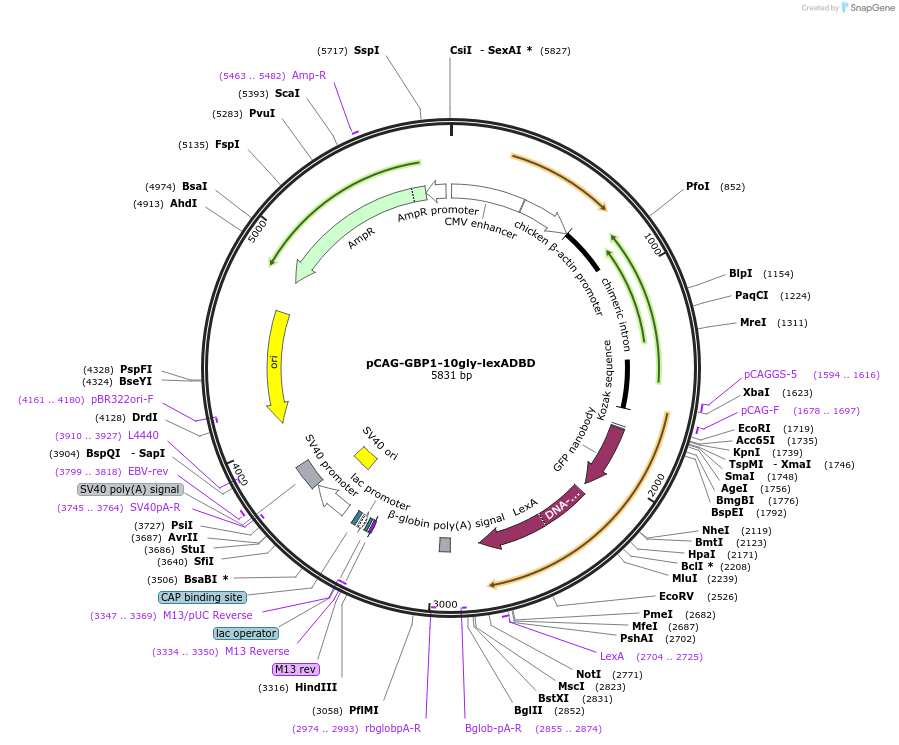pCAG-GBP1-10gly-lexADBD
(Plasmid
#50795)
-
PurposeExpression of a GFP-dependent transcription factor component in mammalian cells
-
Depositing Lab
-
Sequence Information
Ordering
| Item | Catalog # | Description | Quantity | Price (USD) | |
|---|---|---|---|---|---|
| Plasmid | 50795 | Standard format: Plasmid sent in bacteria as agar stab | 1 | $89 | |
Backbone
-
Vector backbonepCAG-GFP
- Backbone size w/o insert (bp) 4823
- Total vector size (bp) 5831
-
Vector typeMammalian Expression
Growth in Bacteria
-
Bacterial Resistance(s)Ampicillin, 100 μg/mL
-
Growth Temperature37°C
-
Growth Strain(s)DH5alpha
-
Copy numberHigh Copy
Gene/Insert
-
Gene/Insert nameGBP1-lexA DNA binding domain fusion protein
-
Alt nameGBP1-10gly-lexADBD
-
Alt nameDBDG
-
SpeciesSynthetic
-
Insert Size (bp)1008
- Promoter CAG
Cloning Information
- Cloning method Restriction Enzyme
- 5′ cloning site AgeI (not destroyed)
- 3′ cloning site NotI (not destroyed)
- 5′ sequencing primer GGACTTCCTTTGTCCCAAATCTG
- 3′ sequencing primer TAGCCAGAAGTCAGATGCTC
- (Common Sequencing Primers)
Terms and Licenses
-
Academic/Nonprofit Terms
-
Industry Terms
- Not Available to Industry
Trademarks:
- Zeocin® is an InvivoGen trademark.
Depositor Comments
Tang J.C. et al. (2013). A nanobody-based system using fluorescent proteins as scaffolds for cell-specific gene manipulation. Cell. 2013 Aug 15;154(4):928-39.
These plasmids were created by your colleagues. Please acknowledge the Principal Investigator, cite the article in which the plasmids were described, and include Addgene in the Materials and Methods of your future publications.
-
For your Materials & Methods section:
pCAG-GBP1-10gly-lexADBD was a gift from Connie Cepko (Addgene plasmid # 50795 ; http://n2t.net/addgene:50795 ; RRID:Addgene_50795) -
For your References section:
A nanobody-based system using fluorescent proteins as scaffolds for cell-specific gene manipulation. Tang JC, Szikra T, Kozorovitskiy Y, Teixiera M, Sabatini BL, Roska B, Cepko CL. Cell. 2013 Aug 15;154(4):928-39. doi: 10.1016/j.cell.2013.07.021. 10.1016/j.cell.2013.07.021 PubMed 23953120







